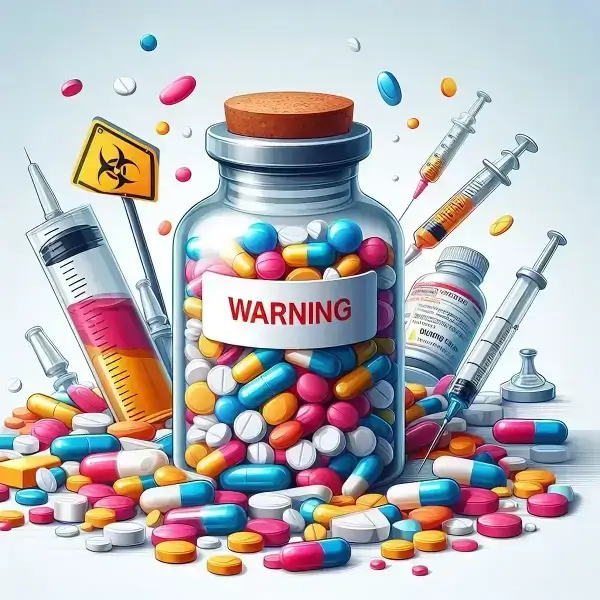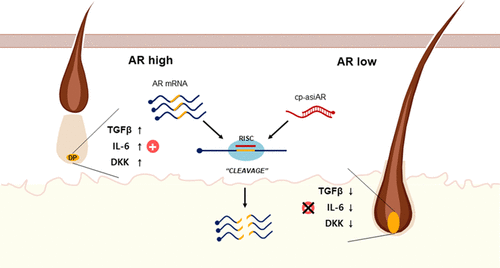Key Highlights:
- Open Payments Data website.
- Polypharmacy.
- Top 300 drugs prescribed in the US.
- Doctors pushing drugs.
- Avoiding an additional cholesterol medication.
- Avoiding an addition blood pressure medication.
- Aspirin no longer recommended for most people.

In the rare instances when I write a post unrelated to hair loss, there is still some overlap (e.g., anti-aging science, regenerative medicine or organ transplants). This post on polypharmacy (excess prescription medications) is an exception.
If you have any concerns about your doctor’s ethics or recommendations, please make sure to check out the below “Open Payments” site link. It tells you how much your doctor has been paid by Big Pharma. This conflict of interested is a major problem in medicine, with over 600,000 physicians receiving payments in any given year.
Open Payments Data Website
Polypharmacy: 5 or More Medications
The word “polypharmacy” is used when someone takes five or more medications simultaneously. Over the past decade, this intake level has become extremely common as doctors have gone overboard in doling out prescriptions. More stringent guidelines when it comes to lowering blood pressure and cholesterol levels have also added to the increase in prescriptions.
According to a Merck article on aging and medications from 2022:
Almost 90% of older adults regularly take at least 1 prescription drug, almost 80% regularly take at least 2 prescription drugs, and 36% regularly take at least 5 different prescription drugs.
Note that the above figures do not even include over-the-counter (OTC) drugs such as Aspirin. And with the 2023 advent of new weight loss drugs such as Ozempic, the polypharmacy drugfest will only exacerbate, especially in younger people.
I have two older relatives who recently even started taking newly FDA approved drugs that slow the progression of Alzheimer’s disease. One quit due to side effects, and another seems to have become far more anxious ever since starting this drug that impacts brain chemistry.
The boom in prescription medication sales is leading to lots of turnover and bad quality hiring at understaffed US pharmacies. In addition to rampant fraud, malpractice and increased insurance rates.
Moreover, elderly people such as my father have a hard time making sure they take their numerous daily medications on time, even with the use of a pill organizer. I know one person who takes around 20 pills per day. I think he no longer cares if his intake schedule varies daily.
Top 300 Drugs Prescribed in the US
In 2021 (the last available full-year of data), the most prescribed medication in the US was cholesterol lowering drug Atorvastatin (brand name Lipitor) with 116.7 million prescriptions (for 28.1 million patients). In second place was diabetes drug Metformin, which I have covered on this site before due to its potential anti-aging and modest hair growth benefits.
- The full list of top 300 drugs can be found here.
Not surprisingly, the numerous drugs available to treat high blood pressure lead the way. Since the 2017 revision of the American Heart Association’s guidelines that lowered target blood pressure levels to 130/80 mmHg from 140/90 mmHg, almost one-half of adults are now classified to have hypertension. If I recall correctly, the new lower guidelines were based on just one very large study’s findings. Hopefully that study was close to perfect and not negatively impacted by any errors or external third party influences.
Many doctors will prescribe a blood pressure lowering medication right away without asking you to make simple lifestyle changes. Even if you are in the borderline range. Disgraceful, and a key reason for my writing this post.
Finasteride came in at 88th place with 8.3 million prescriptions across 2.5 million patients. Note that this includes use for both enlarged prostates and hair loss. Online purchases of generic finasteride from offshore pharmacies are excluded from this official data. Spironolactone (primarily used to lower blood pressure, but also for hair regrowth in females) came in at 54th position. I would not be surprised if oral minoxidil breaks the top 300 list in 2022 and 2023, although the brand name Loniten is not sold anymore.
My Father’s Doctor Drug Pusher
My father had a heart attack in 2014. Ever since then, he has taken 5 pills per day (including an aspirin) to combat his high blood pressure and moderate cholesterol levels. Three years ago, he got a new doctor for his annual heart checkup after the old one retired.
My father wanted to keep going to the same nearby hospital’s reputable heart department, so we are stuck with this new doctor. He is not bad, but he is stubborn and loves to increase people’s prescription meds. And he gets annoyed if you argue against his advice. I managed to outsmart/trick him, and the below suggestions may be worth discussing with your own physician too. Perhaps they will have the same opinion as my father’s doctor: i.e., hogwash.
Note that I am not a doctor and perhaps my various strategies outlined below are dangerous and suspect. Heart attacks and strokes are obviously no joke, and I would not recommend going against a doctor’s recommendations based on years of in-clinic experience. I just trust my intuition far more than my doctor’s advice. And I am highly suspicicious of all the Big Pharma money influencing doctors and hospitals in the US.
Cholesterol Pills: Overprescribed
My father’s cholesterol levels are good after taking just one statin (called Atorvastatin, or brand name Lipitor). His LDL (bad) cholesterol levels are usually around 70 mg/dL. For those who have not had heart attacks or heart disease, the recommendation is to be lower than 100 mg/dL.
The guidelines for those who have had a heart attack in the past are a bit more stringent. If you have had a heart attack like my father, US recommendations are to lower your LDL to 70 or less. In Western Europe, new 2019 regulations recommend lowering LDL levels to below 55 mg/dL in high-risk heart disease patients. And to below 40 mg/dL (!) for those who have had at least two atherosclerotic cardiovascular disease events during the past two years.
When my dad’s LDL readings went up to 80 mg/dL in 2022, the new doctor wanted to put him on a second cholesterol lower drug immediately. This one is called Ezetimibe and is a non-statin so works differently. I told the doctor that my father had a breakfast before his blood test and had also not taken his daily statin right before his blood draw. So a 10 point increase is not as big a deal.
However, the doctor told me that neither of those things makes any difference in the LDL cholesterol readings with modern blood tests. I did not trust him, and asked him to delay the new prescription for one more year after some convincing.
In the following year (2023), my dad did not eat anything for 12 hours prior to his blood test. And he drastically reduced his cholesterol heavy food intake for 2-3 days prior to the blood test. He also took a statin a couple of hours before his blood draw in 2023. Lo and behold, his LDL reading came to 68 mg/dL.
Statins and all drugs have side effects. I am not someone who is anti-drugs at all. My father’s life has likely been prolonged by the 5 medications that he takes. However, doctors are in general not trustworthy anymore. You do not know which one is acting in the best interest of his or her pocketbook and pharma company support/bribery. And in many cases, they just follow a fixed and rigid medication recommendation guideline, without considering any extenuating circumstances.
Many studies in support of drug benefits are also funded by Big Pharma. Moroever, Big Pharma can even donate to hospitals and to researchers, which makes me suspicious about the latter groups’ intentions and scientific findings.
Blood Pressure Pills: Overprescribed
As I mentioned previously, the new US regulations that recommend blood pressure levels of 130/80 mmHg or lower mean that one-half of American adults now take blood pressure medications. For those at high risk of stroke, controlling high blood pressure (hypertension) is of paramount importance.
However, blood pressure variations of 10-20 points are extremely common. Many people get higher blood pressure readings at doctor offices due to anxiety. Something called “white coat syndrome”. Moreover, if you have eaten a lot of salty food prior to your visit or have walked a lot of stairs to get to your doctor’s office, you might get higher readings. Even extreme weather patterns can temporarily affect your blood pressure levels.
While most doctors measure your readings at least twice during an office visit, there is no need to increase your medication if you are just 10 points over in my opinion. If you are overweight, some studies have found that you will see a 1 point drop in blood pressure for every 2 lbs of weight loss.
My father’s readings are usually right around 130/80 mmHg most times he visits the doctor. This is after he takes two medications to control his blood pressure, in additon to a beta blocker (which helps lower both his heart rate and blood pressure). Nevertheless, every 3-4 years, my father’s readings go to between 140-150 for the top number (systolic) and 90-100 for the lower number (diastolic).
When he hit 145/95 mmHg in 2022, the new doctor immediately sent out one more blood presure medication to his pharamacy during our office visit. However, after much back and forth discussion with him via their online messaging system, I managed to delay the new medication recommendation for another year.
I also told the doctor that my father takes his blood pressure medications in the afternoon, but our appointment was in the morning. But he said that would make no difference in my father’s BP readings, as the drugs have a cumulative effect from taking them over all the prior months.
I did not fully trust the doctor. So for my father’s 2023 morning appointment, we made sure that he took both his daily blood pressure lowering pills a few hours before his morning appointment rather than in the early afternoon. I also made him drink hibiscus tea before his appointment, which can lower blood pressure readings by several points.
Lo and behold, at the doctor’s office, his numbers were around 125/75 mmHg. Maybe the lower number was a bit different, but I am sure about the upper one. I did not try to tell the new doctor about what we did, since he is a grumpy and stubborn person.
It is important to note that once these doctors increase your medications, they almost never remove them in the future. Even if my father’s blood pressure levels were to decline to 110/60 mmHg, I doubt that the newly added medication would ever be removed.
Aspirin: Usually Unnecessary
Do not start aspirin is the new 2022 US government task force advice for most 60 and over people, after decades of the opposite recommendation. The potential internal bleeding related side effects are not worth the risk of taking aspirin as a preventative measure.
My father cannot stop taking aspirin now, since he already had a heart attack and has been taking the blood thinner for years. in his more recent blood test, his red blood cell count was slightly below the minimum recommendation. A 2023 study found that long-term daily aspirin use can cause anemia in older people.
I am sure there are dozens of other drugs that are overprescribed in this age of polypharmacy. Even young kids are readily prescribed drugs such as Adderall (Dextroamphetamine) and Ritalin (Methylphenidate) for ADHD; and SSRI antidepressants. In fact, 4 of the top 30 drugs prescribed in the US are SSRIs.
The only positive that I got from researching and writing this post is that I feel a little better in my taking “only” two medications. Albeit both for treating a cosmetic condition called androgenetic alopecia.

